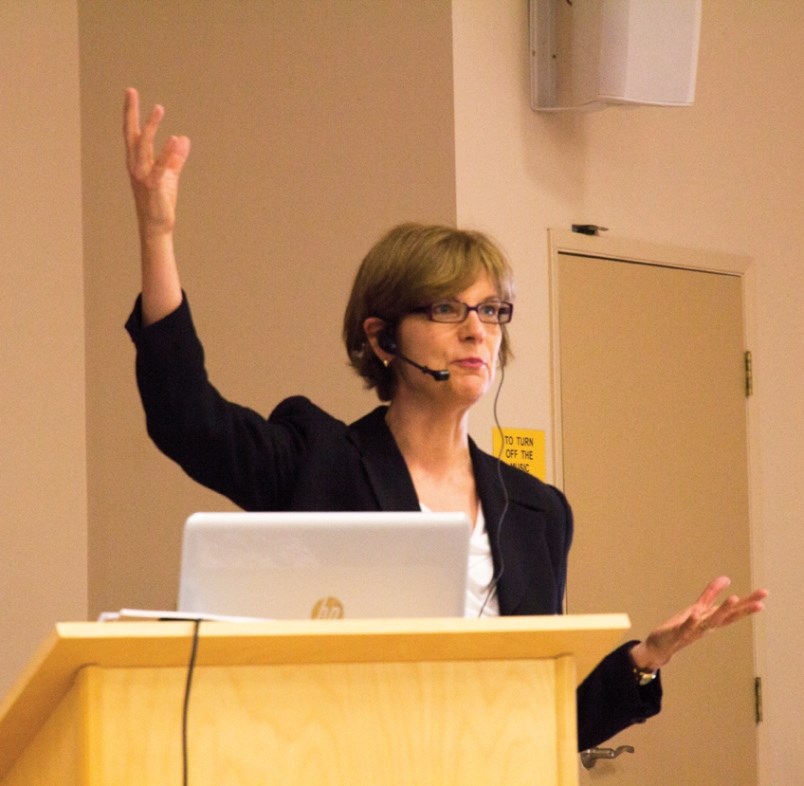B.C. Seniors Advocate Isobel Mackenzie’s latest report calls for better monitoring of care hours delivered by privately run, but publicly funded, long-term care facilities in the province. Mackenzie also said she wants to see more transparency and “tighter financial oversight” of the contracted care sector.
“Contracted long-term care homes cost taxpayers almost $1.3 billion a year… The public needs to know whether contracted long-term care homes are meeting the needs of both residents and taxpayers,” said Mackenzie on the Feb. 4 release of her report, A Billion Reasons to Care.
There are more than 27,000 seniors who live in the 300 publicly-funded long-term care homes in the province, and Mackenzie said 34 per cent of those facilities are owned by for-profit companies, 28 per cent are operated by non-profit societies, and the rest are directly owned by health authorities.
Vancouver Coastal Health (VCH) currently has the second lowest proportion of for-profit beds in the province at 25 per cent, and the highest proportion of not-for-profit operators at 46 per cent.
Mackenzie estimated that for-profit care homes generated 12 times the profit as the not-for-profit sector – $34.4 million versus $2.8 million – and her report highlights several other differences when it comes to how the money they get from health authorities is used.
According to Mackenzie’s findings, care homes in the not-for profit sector spent 59 per cent of revenues on direct care versus 49 per cent in the for-profit sector; not-for-profit care homes spent 24 per cent more per year on care for each resident; and not-for-profit operators exceeded direct care hour targets by around 80,000 hours, while for-profit care homes failed to deliver 207,000 funded direct care hours.
“As Seniors Advocate, this is one of the more troubling findings from this review is this disproportionate spending on direct care by care homes that are receiving the same amount of public funding,” Mackenzie said.
“Operators are allowed to keep whatever difference there is between what the health authority funds them for their ‘worked hour of care’ and what they spend to deliver that worked hour of care … [and] we see significant differences between what for-profits are paying in their cost per hour worked across all disciplines.”
Mackenzie said the biggest differential is among care aides, where in the most extreme example she could find the pay was $13,000 less per year than the industry standard, and a typical care aide in a for-profit facility could be making 28 per cent, or $6.63, less per hour than the industry standard.
“It’s very concerning to me to think about what message we’re sending to the people who might want to work in care when we see this kind of differences in wages paid within our publicly funded system that is all supposed to be delivering the same level of care,” Mackenzie said.
“Campaigns to encourage people to be care aides will fall flat if it’s not backed up by what I think is one of the best recruitment tools out there – industry-standard wages and benefits.”
The Sunshine Coast has found itself on the front lines of the debate over publicly funded, private for-profit long-term care since VCH announced in 2016 that it had signed an agreement with Trellis Seniors Services to build and run a new facility to replace Shorncliffe and Totem Lodge.
One of the flashpoints for those opposed to the VCH-Trellis agreement was the issue around wages and benefits identified by Mackenzie.
VCH, Trellis and the Ministry of Health announced in early 2019 that they’d struck a deal to protect unionized workers expected to shift from the VCH facilities to Trellis, which was heralded as a “significant step” in moving forward with the project, which has yet to break ground.
Mackenzie’s report makes five recommendations, including taking measures to ensure that funding for direct care is used for direct care.
“We must remove the financial incentive for operators to do anything other than provide as many care hours as possible with the public money they receive to deliver direct care,” Mackenzie wrote. “If an operator can find staff who will work for lower wages than their funded rate, they should use their surplus funds to provide more hours of care or return the funding.”
The other recommendations are:
• Tighter reporting of direct care hours.
• Clearer definitions of how expenses like building capital, management fees, head office allocations, administrative expenses, and subcontracts with related parties are reported “to transparently demonstrate value for money to the taxpayer.”
• Standardized reporting to ensure the same information is being collected from all care homes in the province, using the same calculations and the same measurements.
• Detailed, publicly available reporting of revenues and expenses. “The public is entitled to know how their money is spent, in detail, and residents and families are entitled to know how many care hours are delivered by their care home,” Mackenzie said.



